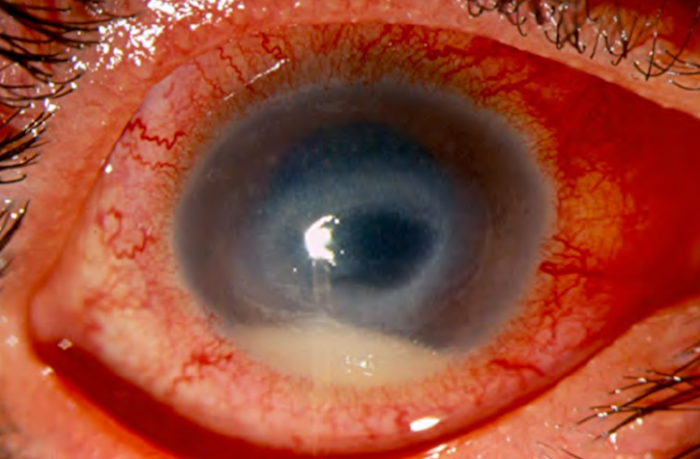 A new outbreak of a rare but preventable eye infection that can cause blindness has been identified in contact lens wearers in a new study led by UCL and Moorfields Eye Hospital researchers. The research team found a threefold increase in Acanthamoeba keratitis since 2011 in South-East England.
A new outbreak of a rare but preventable eye infection that can cause blindness has been identified in contact lens wearers in a new study led by UCL and Moorfields Eye Hospital researchers. The research team found a threefold increase in Acanthamoeba keratitis since 2011 in South-East England.
Reusable contact lens wearers with the eye infection are more likely to have used an ineffective contact lens solution, have contaminated their lenses with water or reported poor contact lens hygiene, according to the findings published in the British Journal of Ophthalmology. “This infection is still quite rare, usually affecting 2.5 in 100,000 contact lens users per year in South East England, but it’s largely preventable. This increase in cases highlights the need for contact lens users to be aware of the risks,” said the study’s lead author, Professor John Dart (UCL Institute of Ophthalmology and Moorfields Eye Hospital NHS Foundation Trust).
Acanthamoeba keratitis is caused by a single-celled microorganism, Acanthamoeba, that is found in environments all over the world, including water bodies and soil.
While anyone could be infected, people who wear contact lenses are at higher risk since the amoebae can survive in the space between the lens and the eye. According to the Centers For Disease Control and Prevention, contact lens wearers make up 85 percent of cases in the United States.
In the United States, an outbreak of Acanthamoeba keratitis was detected in 2007, and cases have been increasing since 2004.
Acanthamoeba keratitis causes the front surface of the eye, the cornea, to become painful and inflamed by the cyst-forming Acanthamoeba microorganism.
The most severely affected patients (a quarter of the total) can lose up to 75% of vision or become blind following the disease and face prolonged treatment. Overall 25% of people affected require corneal transplants to treat the disease or restore vision.
Anyone can be infected, but contact lens users face the highest risk, due to a combination of increased susceptibility to infection, for reasons not fully established, as a result of contact lens wear and contamination of lens cases.
“People who wear reusable contact lenses need to make sure they thoroughly wash and dry their hands before handling contact lenses, and avoid wearing them while swimming, face washing or bathing. Daily disposable lenses, which eliminate the need for contact lens cases or solutions, may be safer and we are currently analysing our data to establish the risk factors for these,” said Professor Dart.
“We now need to share this information as widely as possible with clinicians, contact lens practitioners and contact lens wearers, a strategy that has proved effective in the past in decreasing the incidence and burden of this severe eye infection,” said co-author Dr Nicole Carnt, who completed the study at Moorfields before moving to the University of New South Wales.
“This research confirms what those of us affected by Acanthamoeba keratitis have suspected for some time: that incidence of this awful, life-changing infection are on the increase, and there’s more that should be done to prevent people from losing their sight to Acanthamoeba keratitis,” said Irenie Ekkeshis, who is part of Acanthamoeba Keratitis Patient Support Group UK. “It is absolutely imperative that regulators and those working in the optical sector take the findings seriously, and use the recommendations to take immediate and urgent action on prevention. Contact lenses are medical devices and should be supplied with warnings regarding safe use.”
Source: Nicole Carnt, Jeremy J Hoffman, Seema Verma, Scott Hau, et.al. Acanthamoeba keratitis: confirmation of the UK outbreak and a prospective case-control study identifying contributing risk factors. British Journal of Ophthalmology, 2018; bjophthalmol-2018-312544 DOI: 10.1136/bjophthalmol-2018-312544












[…] Source — healthylbook.com […]
[…] Source […]